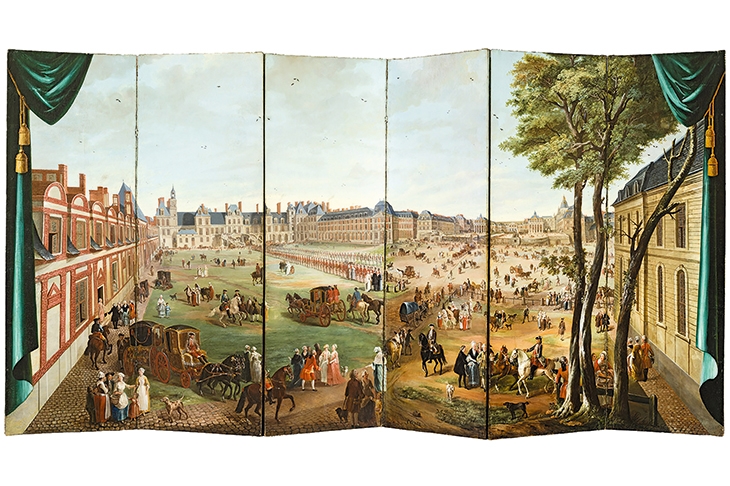The château at Versailles remained the grandest palace in the whole of Europe from the moment that Louis XIV established his court there in May 1682 until his great grandson Louis XVI was forced to leave by a mob of 30,000 in October 1789. Such was its reputation that Lord Chesterfield earnestly advised his son that ‘an hour at Versailles is now worth more to you than three hours in your closet with the best books that were ever written’. Embassies came from as far afield as Siam and Persia. Leather-bound engravings of the palace served as diplomatic gifts and spread its reputation throughout Europe. Every sovereign, leafing through his copy, simply had to recreate his own Versailles.
This collection of essays accompanies an exhibition at the Metropolitan Museum of Art, New York until 29 July. The themes include ambassadorial receptions, princes travelling incognito, tourists and guide books and, lastly, the Americans at Versailles during the last years of Louis XVI’s reign. Indeed, those plainly dressed and plain-speaking American delegations captivated the court and unwittingly contributed to the eventual fall of the French monarchy.
In theory, the King of France held absolute power but he remained remarkably accessible to his subjects, certainly in comparison with his English counterpart. Public spectacles included the king’s lever (ritual getting up) and coucher (going to bed), as well as the grand couvert, when both the king and queen dined, often, we are told, among a ‘crowd of hot and perspiring spectators’. The king attended daily Mass with ‘the most abject common people’ and could be approached afterwards by visitors with various personal requests.
European ambassadors were mostly received in the king’s bedchamber and those from Asia and elsewhere in the Hall of Mirrors. Indeed this room was so spectacular that an embassy of Amerindian chiefs could not believe that it had been made by man.








Comments
Join the debate for just £1 a month
Be part of the conversation with other Spectator readers by getting your first three months for £3.
UNLOCK ACCESS Just £1 a monthAlready a subscriber? Log in